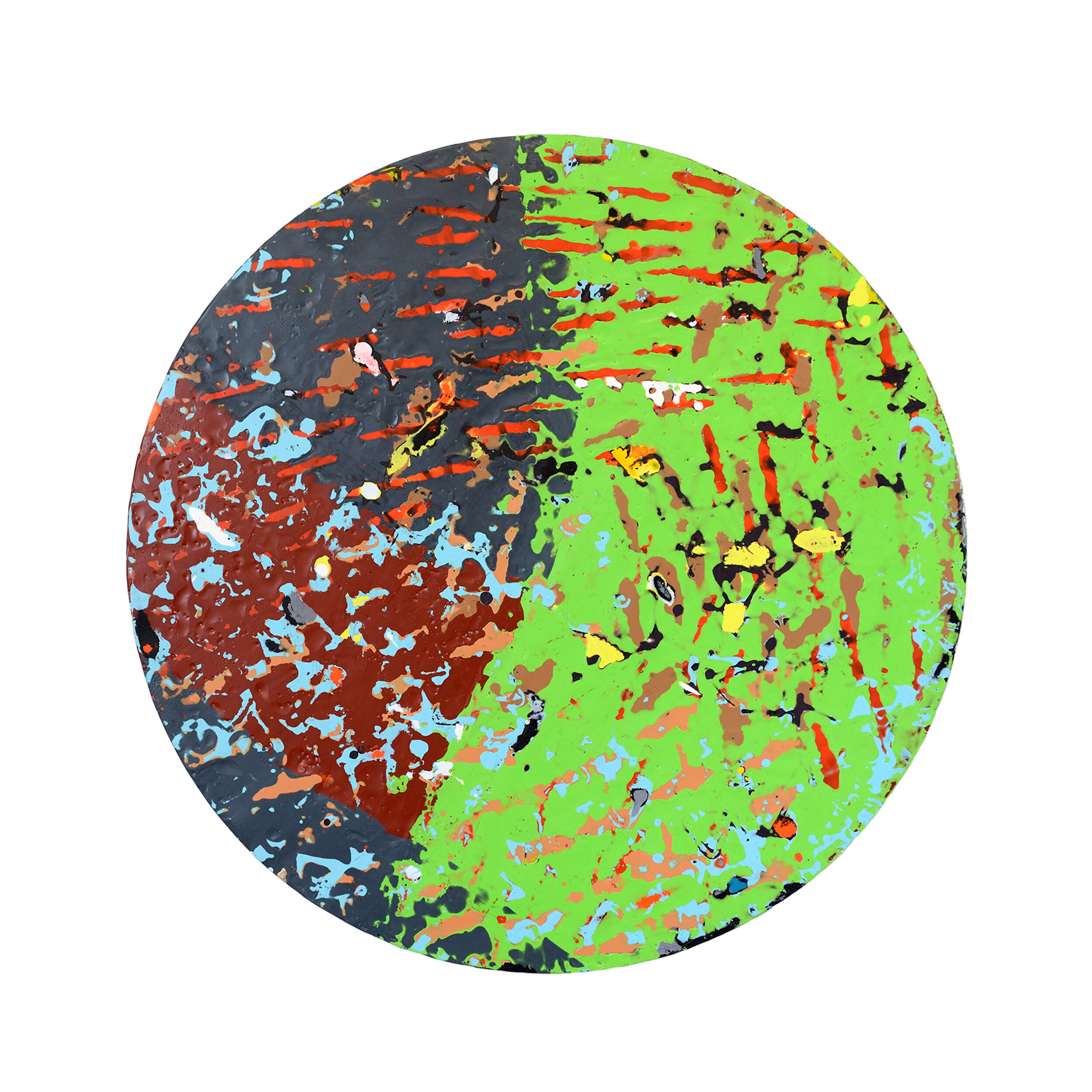In Terra habitatur Arvilla explores our connections to the land and his ancestral bond with Costa Rica as an Australian dual citizen with Latin American heritage. “Mestizaje”, or mixed cultural identity, is central to who Costa Ricans are today. Arvilla’s encaustic paintings resonate with the nuanced substrates of this history, through pattern, colour, layer and erasure. Pigmented, molten beeswax is layered, incised, burnished and scraped-away to reveal the colours beneath and create abstract compositions through stratified, expressive mark-making.
The exhibition title honours the rich cultural history of first nations eroded by colonization. The term proclaims existence, identity and life in the face of its denial through the historical perspective of ‘terra nullius’: land null of life, deemed to be colonisable and free for the taking.
The works form an ode to Arvilla’s beloved landscapes in Australia and Costa Rica through abstracted sensations of place. The large, circular tondi and smaller colourful encaustics recall the wildlife, lush rainforests, active volcanoes, Pacific dry and thick ‘cloud’ forests of Costa Rica, and the terracotta deserts, tropics and snowy mountains of Australia.
Arrvilla’s photographic encaustics form a literal, physical link to the land. Arvilla saved the photograph of his great-grandfather from a bonfire as a boy and has treasured it as a link with the past. Printing the image on numerous papers, he buried them in the topsoil of his rainforest garden in Costa Rica – returning his great-grandfather to the land that was once the family’s coffee plantation, now transforming back to rainforest. Vellum-like through experimental encaustic treatments, the photos bear traces of their time in the soil where seedlings sprouted, leaf-cutter ants bit in and worms nestled beneath the trees.
Terra habitatur remembers the past, whilst paying homage to nature and the ancestral pull of place.




























